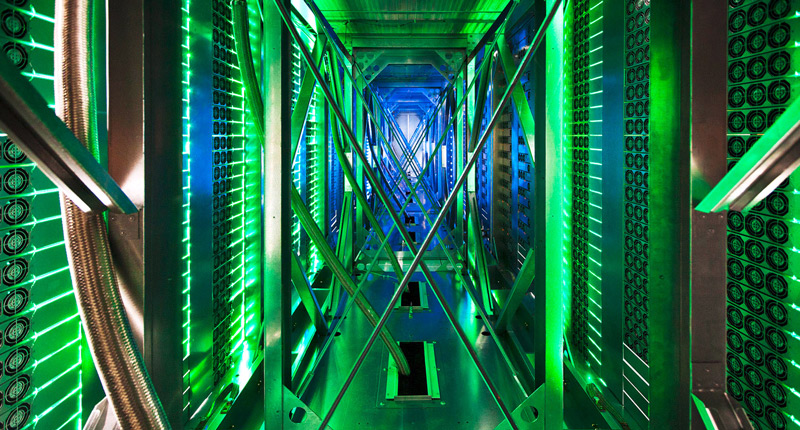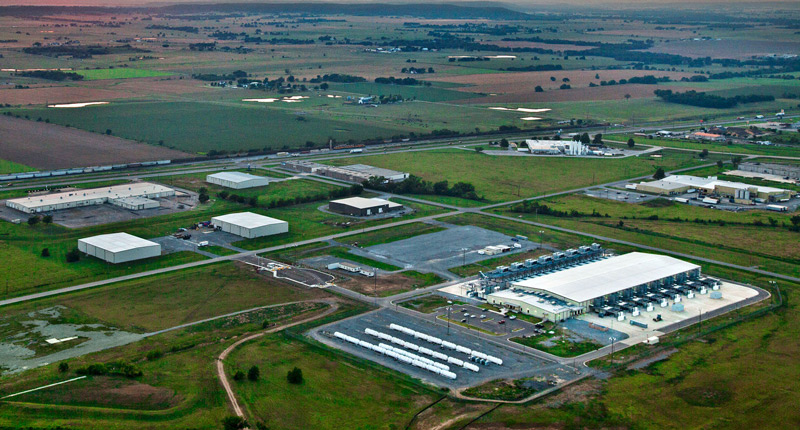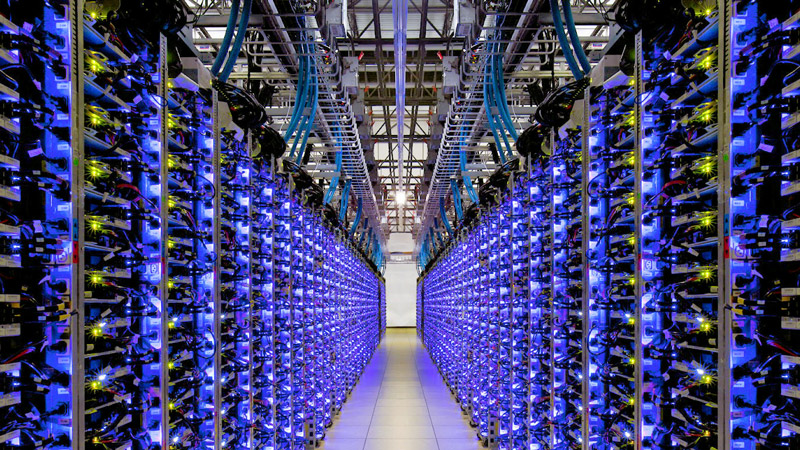Googleʼs data centres are the engines of the Internet – they power all of our products and services and represent the vast majority of our energy consumption. When you use Google products like Search, Gmail and YouTube, the servers in our data centres do the work for you – around the clock and around the world. We work hard to minimize the environmental impact of our services, so that when you use our products, youʼre also using less energy.
For over a decade, Googleʼs been designing and building data centres that use 50 % of the energy of a typical data centre, and weʼre always looking for ways to reduce our energy use even further. Weʼve built our own super-efficient servers, invented more efficient ways to cool our data centres and are committed to powering 100 % of our operations with clean energy. Weʼve signed contracts to purchase nearly 2.5 GW of renewable energy so far, making us the largest non-utility renewable energy purchaser in the world.
In 2013, Google took its commitment to energy efficiency a step further by becoming the first company in North America to achieve a multi-site ISO 50001 energy management system (EnMS) certificate. We are the only major Internet company to have obtained this certificate, which covers our owned and operating data centres. Google has certified 12 data centres globally, including seven sites in the United States, three in Europe and two in Asia.

The journey to ISO 50001
When the ISO 50001 standard came out, we saw the framework as an opportunity to establish a more structured and formalized energy management system and gain third-party recognition for our existing energy efficiency efforts.
Much like the environmental and occupational health and safety management systems, to which our data centres are also certified, ISO 50001 is built around a “Plan-Do-Check-Act” concept. This concept ensures we have a strong energy policy, implement processes that strengthen our EnMS, build a sound auditing programme that verifies our EnMS is effective, continually monitor, assess and respond to our energy efficiency results, while always working on ways to make things even better. Based on the requirements in the standard, Google has developed an EnMS that makes sense for our energy culture. This means continuously challenging energy performance goals, improving upon our energy-efficient data centre designs and establishing progressive monitoring systems, to name a few.
When developing our EnMS, we took a lean approach to documentation. We built a streamlined system that consolidated ISO 50001 requirements into only five management system procedures, reducing the amount of time our employees need to spend on paperwork so they can spend more time researching and implementing energy efficiency initiatives.

We also streamlined our internal auditing. Because so much of our energy programme is managed at our corporate headquarters, we created a targeted internal auditing programme for our data centres. It limits the number of on-site data centre internal audits conducted each year by utilizing a self-audit questionnaire at some selected sites. The audit topics are also focused to include only those relevant to data centre activities.
Our EnMS certification audits have never identified any non-conformances, demonstrating that our programme is comprehensive and effective.
Our energy management system
How do we manage energy at Google? We drive down the cost and environmental impact of running our data centres by designing and building our own facilities to best use the natural environment and conditions. We install smart temperature and lighting controls, employ advanced cooling and controls strategies, and redesign how power is distributed to reduce unnecessary energy loss. We build our own custom highly efficient servers and keep them busy, so we can do more with less energy.
We can only improve upon what we measure, so we regularly calculate comprehensive efficiency performance data for each facility. In fact, we were the first data centre operator to disclose detailed energy efficiency data for all of our data centres in 2008, and weʼve continued to publish this every quarter since then.
Compared to five years ago, we can now deliver over 3.5 times as much computing power for the same amount of electrical power. That means that even though weʼre sending more e-mails, watching more YouTube videos and saving more digital photos, weʼre using the same amount of energy.

Driving further energy efficiency through machine learning
In our ongoing pursuit of extreme efficiency, we recently hit upon a new tool to drive our energy use to unprecedented lows: machine learning.
In a dynamic environment like a data centre, it can be difficult for a human to see how all of the variables – IT load, outside air temperature, etc. – interact with each other. To address this, two years ago we began applying machine learning to optimize our data centre operations. We partnered with our artificial intelligence company, DeepMind, to analyse the large amounts of data we gather in the course of our daily operations and build models to recognize patterns and “learn” from them, which enabled us to predict – and improve – data centre performance.
Our machine learning system was able to consistently achieve a 40 % reduction in the amount of energy used for cooling, which equates to a 15 % reduction in overall energy overhead after accounting for electrical losses and other non-cooling inefficiencies.
The initiatives weʼve implemented to date have saved us a billion dollars and weʼve learned a lot along the way. By outlining our best practices and sharing them via white papers, we are helping other data centres run more efficiently.
Enabling others to reduce energy use with the cloud
Weʼre building the worldʼs most energy-efficient computing infrastructure through our data centres and the gains weʼre making can benefit anyone. Because of our energy efficiency efforts, our cloud empowers millions of businesses to reduce their energy use too. By switching to Google Apps, companies have reduced office computing costs, energy use and carbon emissions by 65 % to 90 %1) .
As we continue our quest for energy efficiency, ISO 50001 is one of the tools we will continue to use. We are participating in ISO 50001ʼs technical committee to ensure the standard continues to be a valuable tool for Google and others.

1) Google Apps: Energy Efficiency in the Cloud, 2012 white paper

